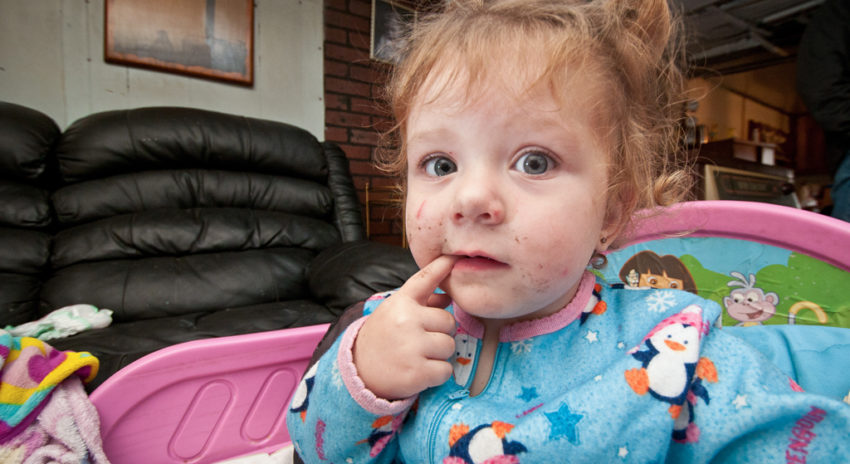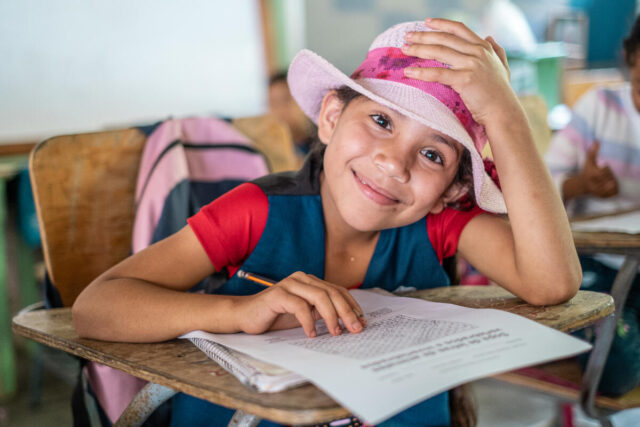The truth is, hunger is all around us — even right here in the United States — and it affects more people than we would like to believe. But hunger is often invisible. When we don’t want to see it, hunger’s power to harm people only grows. Here are five facts on how children face hunger in America.
* * *
Recently, a woman approached me and asked if I could spare change for a meal. Without thinking, I said, “I’m sorry, I don’t have any money.”
My cheeks automatically flushed with embarrassment, and my heart sank. I had meant to say I didn’t have cash to give her. It was completely obvious that a lack of money wasn’t something I was dealing with.
It was my birthday. I had spent the day exploring downtown Seattle and shopping with my friends. We were just leaving a restaurant, shopping bags in hand, when the woman approached.
Walking back to our car, I was ashamed at the thoughtlessness of my comment. But the uncomfortable pit in my stomach wasn’t just that. I was faced with this woman’s needs. It hurt to see her lacking something she needed. I felt guilty for what I had. The sadness of the moment lingered with me.

The truth is, hunger is all around us — even right here in the United States — and it affects more people than we would like to believe. This woman made her need obvious to me. But hunger is often invisible. When we don’t want to see it, hunger’s power to harm people only grows.
One of the saddest realities of hunger is that the people most vulnerable to its harmful effects are children. Growing and developing without proper nutrition can impact a child for life. Many people believe that American children are immune to hunger because of school feeding programs.
But the reality is a much bleaker picture. Here are five facts on children facing hunger in America:
- 16.4 million children — 22% — in the United States lived in poverty in 2010.
- Research indicates that hungry children do more poorly in school and have lower academic achievement because they are not well prepared for school and cannot concentrate.
- In 2010, 20.6 million low-income children received free or reduced-price meals through the National School Lunch Program. Unfortunately, only 2.3 million — 11.2% — of these same income-eligible children participated in the Summer Food Service Program.
- According to the USDA, more than 16 million children lived in food-insecure households in 2010.
- In 2009, the top states with the highest rate of food-insecure children under 18 are Oregon, Arizona, Arkansas, and Texas, as well as the District of Columbia.
It’s easy to feel anger, place blame, or rationalize ignoring someone than it is to face the sadness of seeing hungry people in our neighborhoods right here in the United States. Jesus does not ask us to question how people got where they are, tell them what they need to do with their lives, or pretend the problem doesn’t exist. He says to feed them.
If anyone has material possessions and sees his brother in need but has no pity on him, how can the love of God be in him? Dear children, let us not love with words or tongue but with actions and in truth. –1 John 3:17-18 (NIV)
When we choose to ignore hunger, its power to harm only grows, and children are some of the most vulnerable victims, even here in the United States.
Read related article: Surviving the hungry months of summer across the United States
As we celebrate the Fourth of July and our nation’s independence, let us not forget our fellow Americans who are struggling this very moment with poverty and hunger.
Make a one-time donation to help feed a hungry U.S. family for three days. Your gift will help deliver nutritious meals like oatmeal, lentil soup or pasta, and a bean and rice casserole to American families who struggle with hunger.



Comments